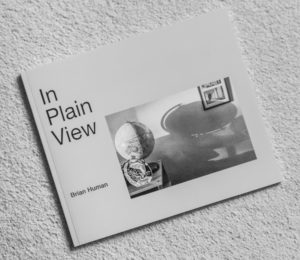 It is easy to take photographs, more difficult to paint or draw, according to Andrew Marr introducing his latest publication, A short book about painting, at Ely cathedral on 6th November. Though this is a gross over simplification, I have to admit, if only on the basis of personal experience, that it is broadly true. The comment appears to reflect the low esteem in which Marr holds photography and denigrates it as a creative medium. In A short book… Marr takes this further and writes disparagingly about: being ‘devoured by the digital revolution’; ‘the overwhelming wave of digital imagery’; ‘the cold digital present’; the ‘smooth lucent shine’; and ‘the omnipresent, glassy, digital effect of most modern culture’. These criticisms surely apply more widely, but they appear to focus unfairly on photography.
It is easy to take photographs, more difficult to paint or draw, according to Andrew Marr introducing his latest publication, A short book about painting, at Ely cathedral on 6th November. Though this is a gross over simplification, I have to admit, if only on the basis of personal experience, that it is broadly true. The comment appears to reflect the low esteem in which Marr holds photography and denigrates it as a creative medium. In A short book… Marr takes this further and writes disparagingly about: being ‘devoured by the digital revolution’; ‘the overwhelming wave of digital imagery’; ‘the cold digital present’; the ‘smooth lucent shine’; and ‘the omnipresent, glassy, digital effect of most modern culture’. These criticisms surely apply more widely, but they appear to focus unfairly on photography.
 Where Marr does have a point is when championing the materiality of paintings. He argues: ‘In the end, the painter produces a painting which must work in its own right. It must have its own bulk and identity, stand on its own feet and be the thing itself, not something “about” something.’ It’s a view close to that expressed by Lily Cole referring to the writing of Clement Greenberg (Happy Reader 9, Summer 2017): ‘…Greenberg argued that what art could do in the face of the rise of the new photographic medium was to defend what was unique to art. To painting especially – its materiality. That in reality, Rothko and Jackson Pollock were making an object, as opposed to an object that’s pretending to be a person or a tree.’ Marr reinforces his argument by stressing texture, ‘You want the marks to be visible…’, the importance of the surface.
Where Marr does have a point is when championing the materiality of paintings. He argues: ‘In the end, the painter produces a painting which must work in its own right. It must have its own bulk and identity, stand on its own feet and be the thing itself, not something “about” something.’ It’s a view close to that expressed by Lily Cole referring to the writing of Clement Greenberg (Happy Reader 9, Summer 2017): ‘…Greenberg argued that what art could do in the face of the rise of the new photographic medium was to defend what was unique to art. To painting especially – its materiality. That in reality, Rothko and Jackson Pollock were making an object, as opposed to an object that’s pretending to be a person or a tree.’ Marr reinforces his argument by stressing texture, ‘You want the marks to be visible…’, the importance of the surface.
 In the early days of photography the daguerreotype had materiality and was a unique thing in its own right. Later, the carte de visite was more than just a mere photograph, it was a thing with a particular social status. The same might be said of ‘real photograph’ postcards, especially when written and posted. The subsequent history of photography increasingly valued the fine print, that unique combination of paper coated in silver miraculously converted to subtle and rich tones. It was a thing itself. The decline started with the advent of resin coated paper, which no longer had the unique feel of the fibre based print. The replacement of silver by ink in photographic printing exemplifies the advent of the digital world Marr deplores. Yet it is exactly that which is now giving photography a new opportunity ‘be the thing itself, not something “about” something’, the photo book.
In the early days of photography the daguerreotype had materiality and was a unique thing in its own right. Later, the carte de visite was more than just a mere photograph, it was a thing with a particular social status. The same might be said of ‘real photograph’ postcards, especially when written and posted. The subsequent history of photography increasingly valued the fine print, that unique combination of paper coated in silver miraculously converted to subtle and rich tones. It was a thing itself. The decline started with the advent of resin coated paper, which no longer had the unique feel of the fibre based print. The replacement of silver by ink in photographic printing exemplifies the advent of the digital world Marr deplores. Yet it is exactly that which is now giving photography a new opportunity ‘be the thing itself, not something “about” something’, the photo book.
Photos: 1. Daguerreotype portrait of a woman with love token and daguerreotype, ca. 1850; 2. Jonty Pentelow, Vicrage Garden, Guyhirn, 1929, photo Margaret George, silver print on fibre based paper; 3. In Plain View – Blurb Book, July 2016
